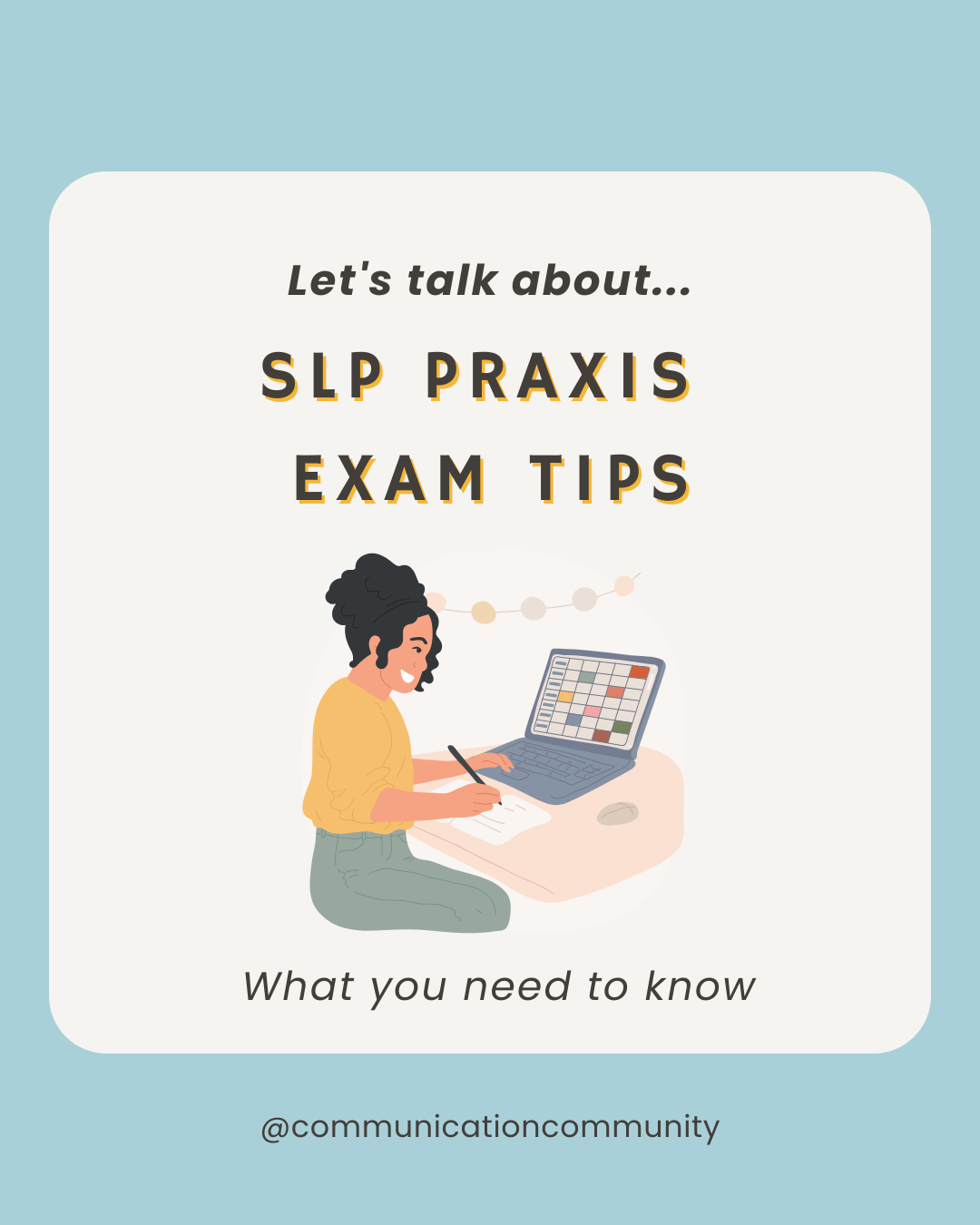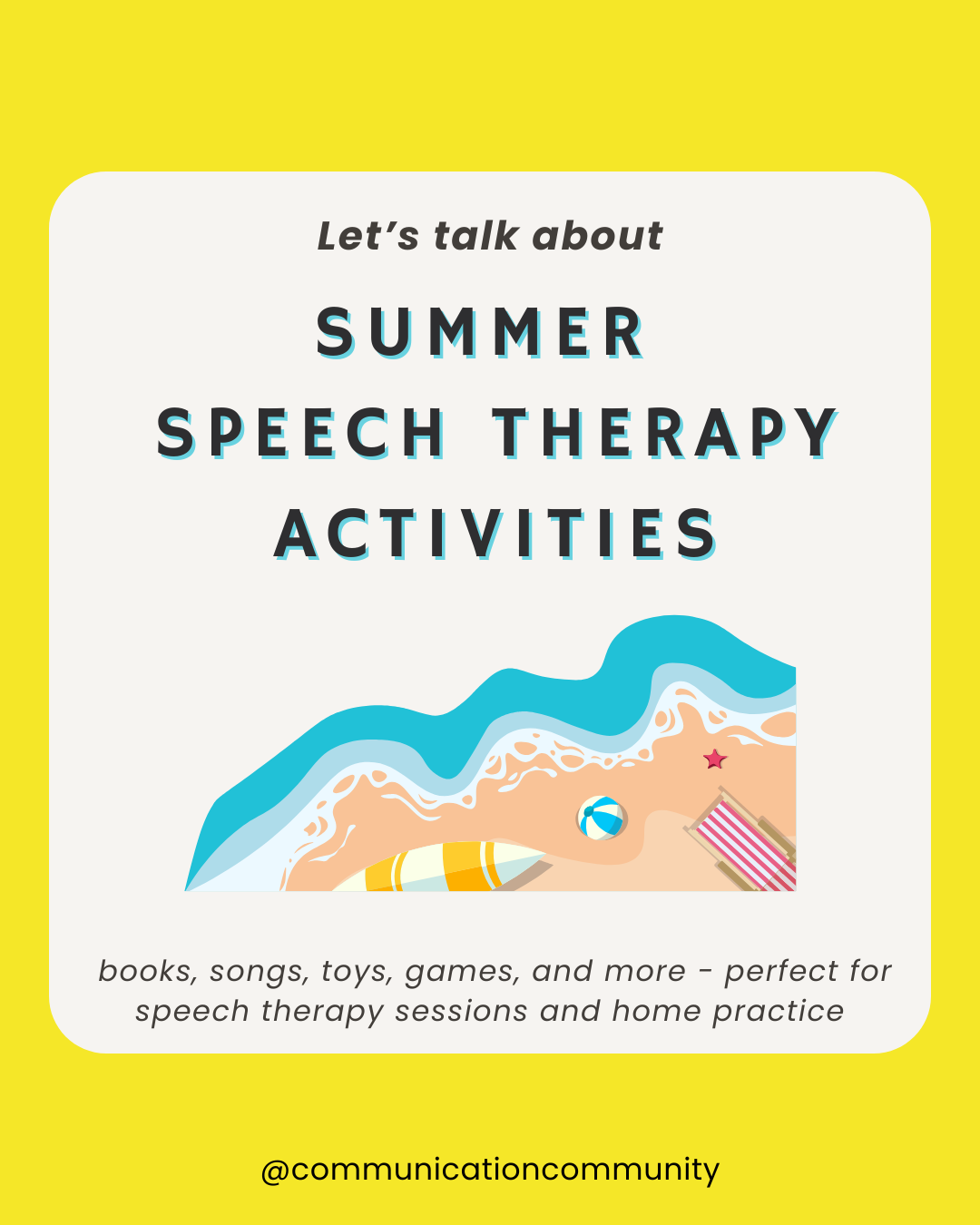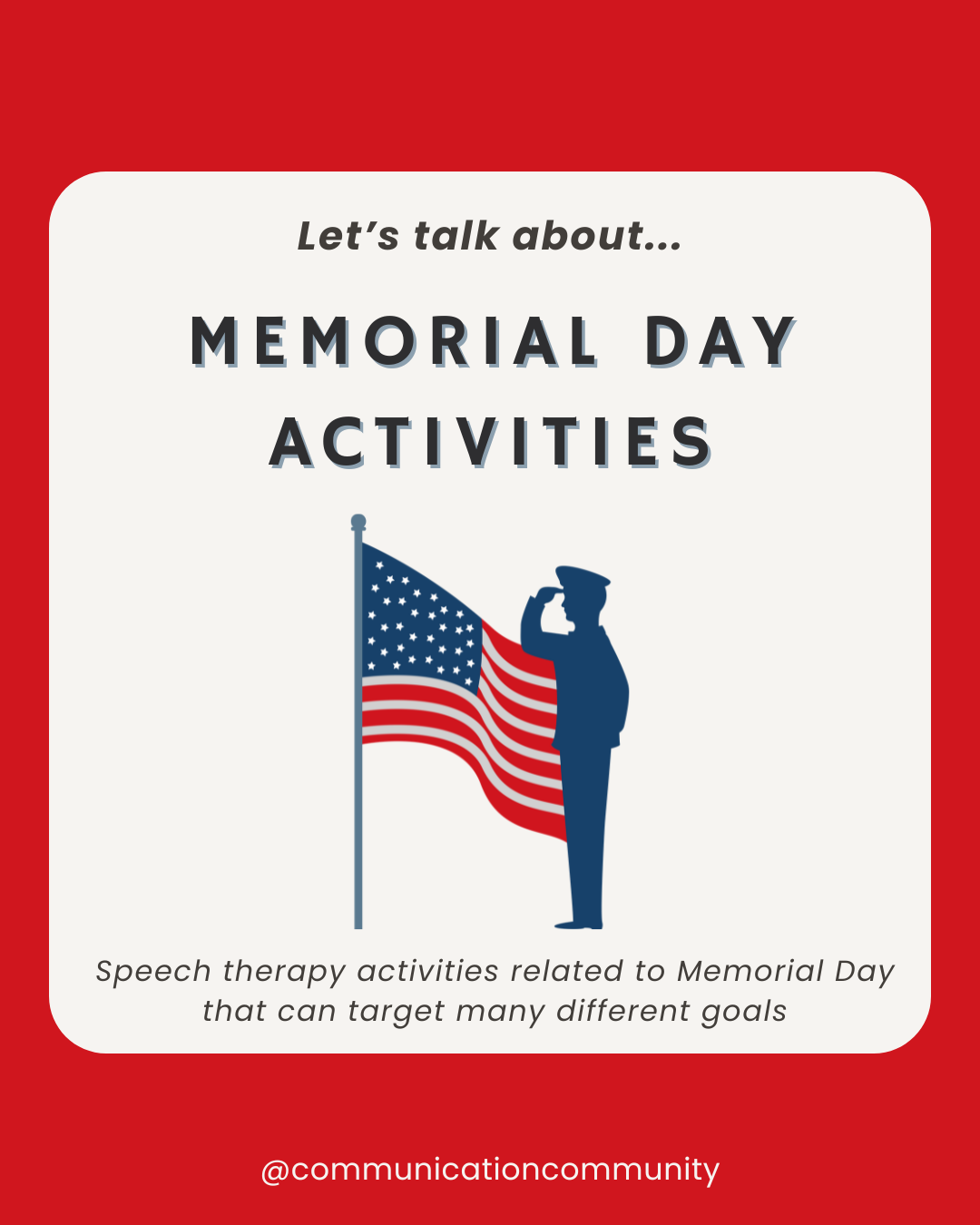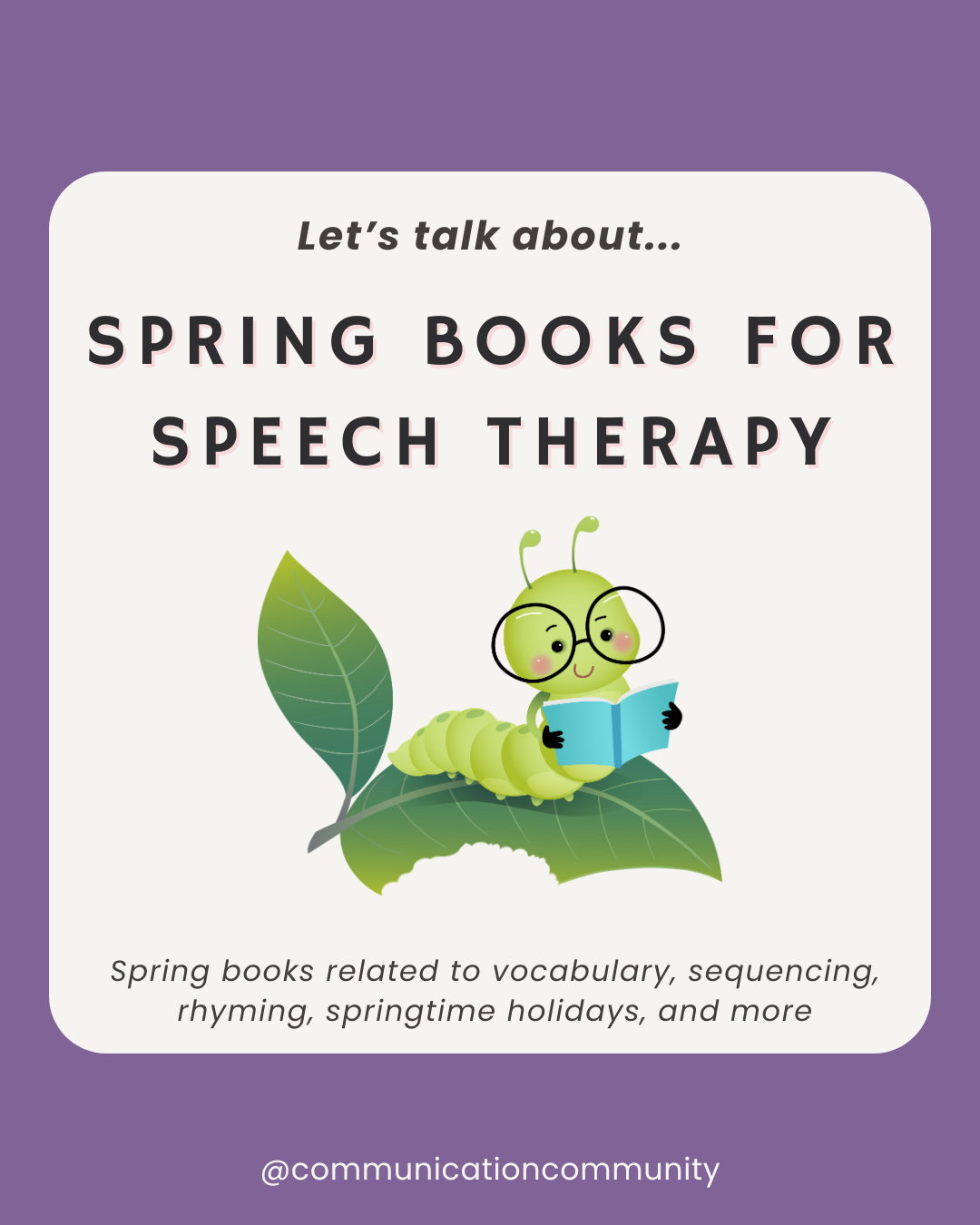Why Use Themed Lessons in Speech Therapy?
Below are 3 reasons why themed lesson plans are easy, fun, and engaging to use in speech therapy sessions 🤩.
1.They Capture Students’ Interests.
Themes, especially ones students can relate to, can be really engaging and create connections to the world around them! Students may be able to relate to themes they’ve covered in other classes or have been exposed to outside of school. For example, a fall-themed lesson can cover fun holidays (e.g., Halloween) and topics learned about in school (e.g., why leaves change colors).
2. They Build Communication Skills.
Themed lesson plans provide a strong setting to target both receptive (understanding language) and expressive (using language) skills. For example, a fall-themed session might include listening to a story about a scarecrow, following multi-step directions to create one, and then creating a story about one. This also touches on different skills across different activities, which allows you to target different goals across contexts. We know how beneficial generalizing skills and concepts can be!
Themed lessons are also a great way to teach vocabulary. One of the most effective ways to teach vocabulary is to provide a lot of exposure in different contexts (yes!). Teaching may combine providing explicit definitions (e.g., harvest is the process of gathering crops) while also demonstrating its use in different contexts (e.g., playing a game where you have to harvest different foods).
3. They Enhance Cross-Curricular Learning.
As mentioned earlier, a student may have learned about why leaves change colors in Science Class, completed a math lesson on measuring crops, and done an apple-printing activity in Art. A themed approach often allows for cross-curricular links, which can help make learning more connected.
If you are trying to pick a theme that you believe will pique your students’ interests, find out what they’re learning about in their other classes! You can choose the same, or related, theme, and target their speech and language goals while also enhancing learning across the curriculum. For example, if they’re learning about the life cycle of plants, you may pick a book that touches on someone growing plants or complete a vocabulary lesson on the parts of plants.
Fall-Themed Speech Therapy Lessons
Below are four lesson plans that all tie to the “fall” theme. Choose one, or all four, to use in your sessions! Download your lesson plan outline and abbreviated vocabulary freebie below. A more comprehensive vocabulary lesson is available in our premium membership community!
Links to the books and additional materials are below. You can almost always find book read-alouds on YouTube as well!
You can also target articulation skills while completing these lessons. For example, if the student is working on the /l/ sound, you can have them focus on producing words like, “fall,” “leaves,” “festival,” and “apple.”
Lesson 1: Introduction to Fall
- Vocabulary: Fall, leaves, acorn, harvest, scarecrow
- Picture Book: "Fletcher and the Falling Leaves" by Julia Rawlinson
- Receptive Language Skills: Answering wh- questions in the story, identifying fall vocabulary in picture
- Expressive Language Skills: Labeling fall vocabulary, discussing fall activities that either they or others participate in
- Materials Needed: book, construction paper, writing utensils
Activities:
- Teach and review new vocabulary as well as fall activities. For example, you may look at pictures of the vocabulary, explain their meanings, and use them in a sentence.
- Read the book. Find new vocabulary words and discuss what happened in the story.
- Craft: Create a "fall leaf" out of paper and write one favorite fall activity on it.
Lesson 2: Fall Foods
- Vocabulary: Pumpkin, apple, corn, cider, squash
- Picture Book: "Too Many Pumpkins" by Linda White
- Receptive Language Skills: Following multi-step directions to make a pretend 'fall feast'
- Expressive Language Skills: Describing tastes and textures of fall foods
- Materials Needed: book, plastic bin or box, popcorn kernels, apples, pumpkin seeds
Activities:
- Teach and review new vocabulary.
- Read the book and discuss different foods that are popular in the fall.
- Sensory bins: Bins with textures related to fall foods (popcorn kernels for corn, apple slices, etc.) Discuss tastes and textures of fall foods.
- Recipe role-play: Pretend to (or actually do) cook a simple fall dish, like apple sauce or pumpkin pie, emphasizing the steps and ingredients.
Lesson 3: Fall Festivals and Holidays
- Vocabulary: Halloween, Thanksgiving, festival, costume, parade
- Picture Book: "Arthur’s Halloween" by Marc Brown or "Thanksgiving is for Giving Thanks" by Margaret Sutherland
- Receptive Language Skills: Understanding the sequence of fall events and holidays
- Expressive Language Skills: Sharing experiences or traditions related to fall holidays
- Materials Needed: book, pictures of holidays and activities, newspapers, magazines, and/or printer to print out images
Activities:
- Teach and review new vocabulary.
- Read the chosen book and discuss fall holidays.
- Sequence cards: Put cards in order that show the timeline of fall holidays and activities.
- Drawing or collage: Create a picture or collage from newspapers, magazines, or online images about a favorite fall holiday or festival.
Lesson 4: Preparing for Winter
- Vocabulary: Migration, hibernation, chilly, sweater, frost
- Picture Book: "Bear Has a Story to Tell" by Philip C. Stead
- Receptive Language Skills: Following instructions for "preparing" stuffed animals for winter
- Expressive Language Skills: Explaining how animals and people prepare for winter
- Materials Needed: book, stuffed or play animals, doll (or small) clothing items
Activities:
- Teach and review new vocabulary.
- Read the book and discuss how animals prepare for winter during fall.
- Animal sorting game: Sort animals into categories based on whether they migrate, hibernate, or adapt for winter.
- Dramatic play: Provide scarves, mittens, and stuffed animals for children to help "prepare for winter."
Additional Resources for Fall-Themed Lessons
Visuals: Download this fall-themed visual for vocabulary. In addition to using this as a visual, you can print multiple copies and use it for a BINGO or memory game!
You can also have this visual PLUS 12 MORE PAGES of vocabulary worksheets if you join our premium membership community! For a low monthly or annual cost, you get access to this and our growing content library 👀 A sneak preview is below.

Find more articles and information in other fall-themed blog posts!
- 20 Fall-Themed Books for Speech Therapy
- 5 Fall-Themed Activities for Speech Therapy
- Halloween Mad Libs
- Pumpkin Decorating Speech and Language Activities
This post contains affiliate links and we are (slightly) compensated if you use them, but all opinions are our own. We appreciate the support!
References
American Speech-Language-Hearing Association. (n.d.). Spoken language disorders. American Speech-Language-Hearing Association. https://www.asha.org/practice-portal/clinical-topics/spoken-language-disorders/#collapse_8
Lugo-Neris, M. J., Jackson , C. W., & Goldstein, H. (2010, July 1). Facilitating vocabulary acquisition of young English language learners ... https://pubs.asha.org/doi/10.1044/0161-1461(2009/07-0082)

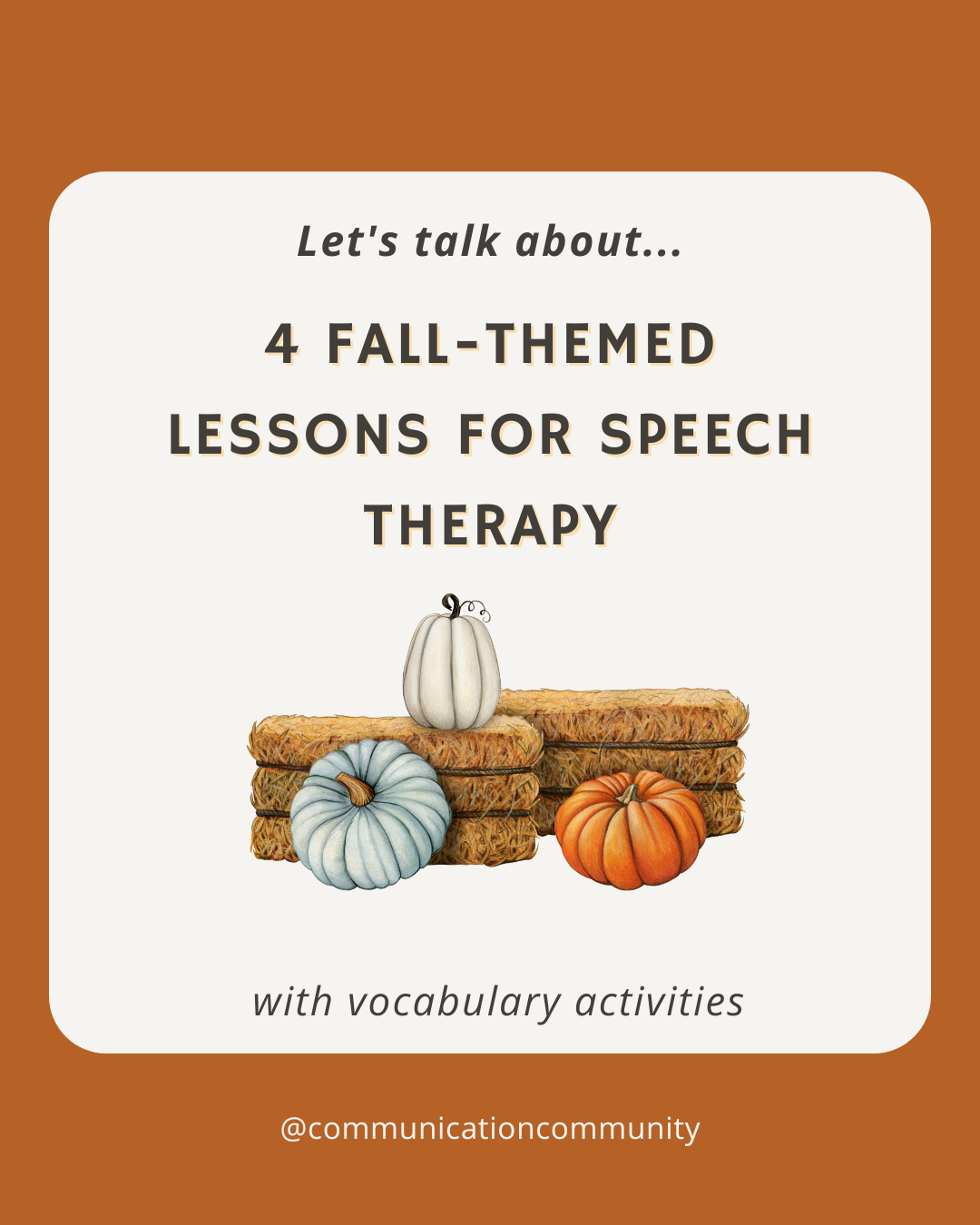
![How to Write Apraxia Goals [with goal bank]](https://www.communicationcommunity.com/content/images/2024/07/Apraxia-Goals--1-.png)
